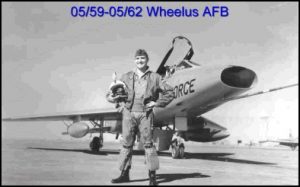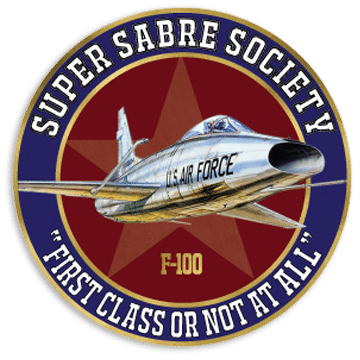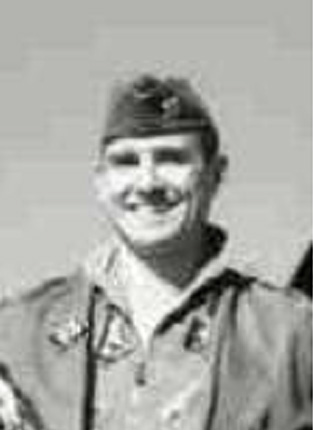Joe says “Eleven years in the Air Force was a real ball!! I did no time in an operational TAC Squadron.
I was very fortunate to do two tours at Luke and one at Wheelus instructing. Instructing gunnery, I think, was some of the best flying.
Enjoyed working with students.
Making the decision to leave the Air Force after eleven years was real tough but as it turned out it was the best choice.
In 1984 got a homebuilt kit, Glasair TD (taildragger). Certified “experimental 7/87. 1040 hours in type!
Still getting vertical, 4Gs, trying to get the Marines at Cherry Point to play!!
Check six!!”
Joseph Haines – Caterpillar Story
 Luke got the Hun in 1958. As you got checked out you would fly with someone else. This “F” had come from Nellis and had just gone through an acceptance check. This was a transition flight with John Wilkes who worked in Group. We did the air work and came back for T&Gs at Luke. We were on the go after the first one when we got a “flt system fail” light. I called mobile and told them that we had the problem and would make a full stop. John said something about pitch so I took the a/c pushed the power up and started a left turn to downwind. We were discussing the situation going up to downwind.
Luke got the Hun in 1958. As you got checked out you would fly with someone else. This “F” had come from Nellis and had just gone through an acceptance check. This was a transition flight with John Wilkes who worked in Group. We did the air work and came back for T&Gs at Luke. We were on the go after the first one when we got a “flt system fail” light. I called mobile and told them that we had the problem and would make a full stop. John said something about pitch so I took the a/c pushed the power up and started a left turn to downwind. We were discussing the situation going up to downwind.
Everything seemed normal to me until I started to level off and bring the power back. I had no pitch control!! I said “John we have to get out,” he said, “I’m ready.” I pulled the armrests up and squeezed the trigger at the same time. I knew we were in trouble since we were only 1,500′ AGL and the nose was already slightly below the horizon.
I can’t remember much about seat separation, but I do remember when my chute opened; it opened behind me not over me. I think I had the “D” ring in my hand. One swing and I was on the ground. We went out just on the south side of Litchfield Park. I landed about 30 yards from a big irrigation ditch. There were a couple of farm workers standing on the other side pointing into the water. I ran over there thinking that John may have landed in the water. They jumped in and pulled up my seat.
About that time an H-21 arrived and picked me up. John didn’t make it. We had no zero lanyards. The investigation found one of the “Wiggins Quick Disconnects” was not connected on our good flight control system. These disconnects were located on each side of the fuselage. Three on each side. On one side was #1 pressure, #2 pressure, utility pressure, and on the other were returns on each system. They were designed to seal when disconnected so hydraulic fluid wouldn’t spill when the aft section was pulled off. Our good system had the RAT [Ram Air Turbine] but was not connected to the slab. At the time, the flight control system check, after start, was to “stir” the stick, check for pressure drop & build up.
This accident changed that check to, select #1, stick straight back, ailerons neutral, release the stick, check for pressure drop and stick full right, release check for pressure drop. Then forward and left on #2. This told you that each system was powering each flight control.
Just a little history!!




